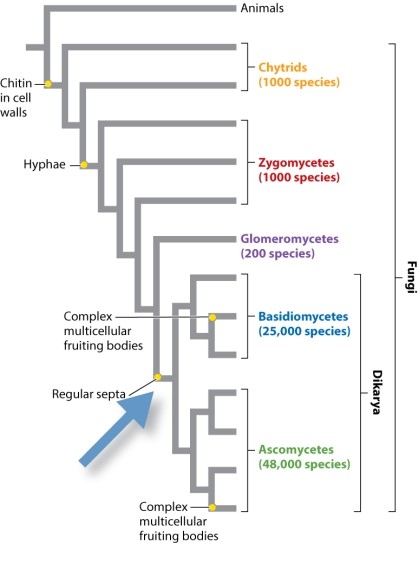Consider the phylogeny (Fig. 34.15) below. Imagine that the trait "complex multicellular fruiting bodies" actually was present in the common ancestor indicated by the arrow. What would its presence in the common ancestor mean for the evolution of fruiting bodies in the group Dikarya? 
A) The group Glomeromycetes lost complex multicellular fruiting bodies.
B) The group Dikarya has members that didn't evolve complex multicellular fruiting bodies.
C) The group Dikarya has members that lost the trait of complex multicellular fruiting bodies.
D) Because only one trait can evolve at a node, regular septa would have evolved at some other place on the phylogeny.
Correct Answer:
Verified
Q89: Which of the following represents the
Q90: In many groups of fungi, karyogamy and
Q91: Which of the following statements CORRECTLY describes
Q92: What is the primary advantage of having
Q93: Your instructor gives you a sample from
Q95: Which of the arrows on the phylogeny
Q96: A researcher discovers a new species of
Q97: Recall that glomeromycetes are fungi that can
Q98: The most recent common ancestor of animals
Q99: How are the zygote and the dikaryotic
Unlock this Answer For Free Now!
View this answer and more for free by performing one of the following actions

Scan the QR code to install the App and get 2 free unlocks

Unlock quizzes for free by uploading documents